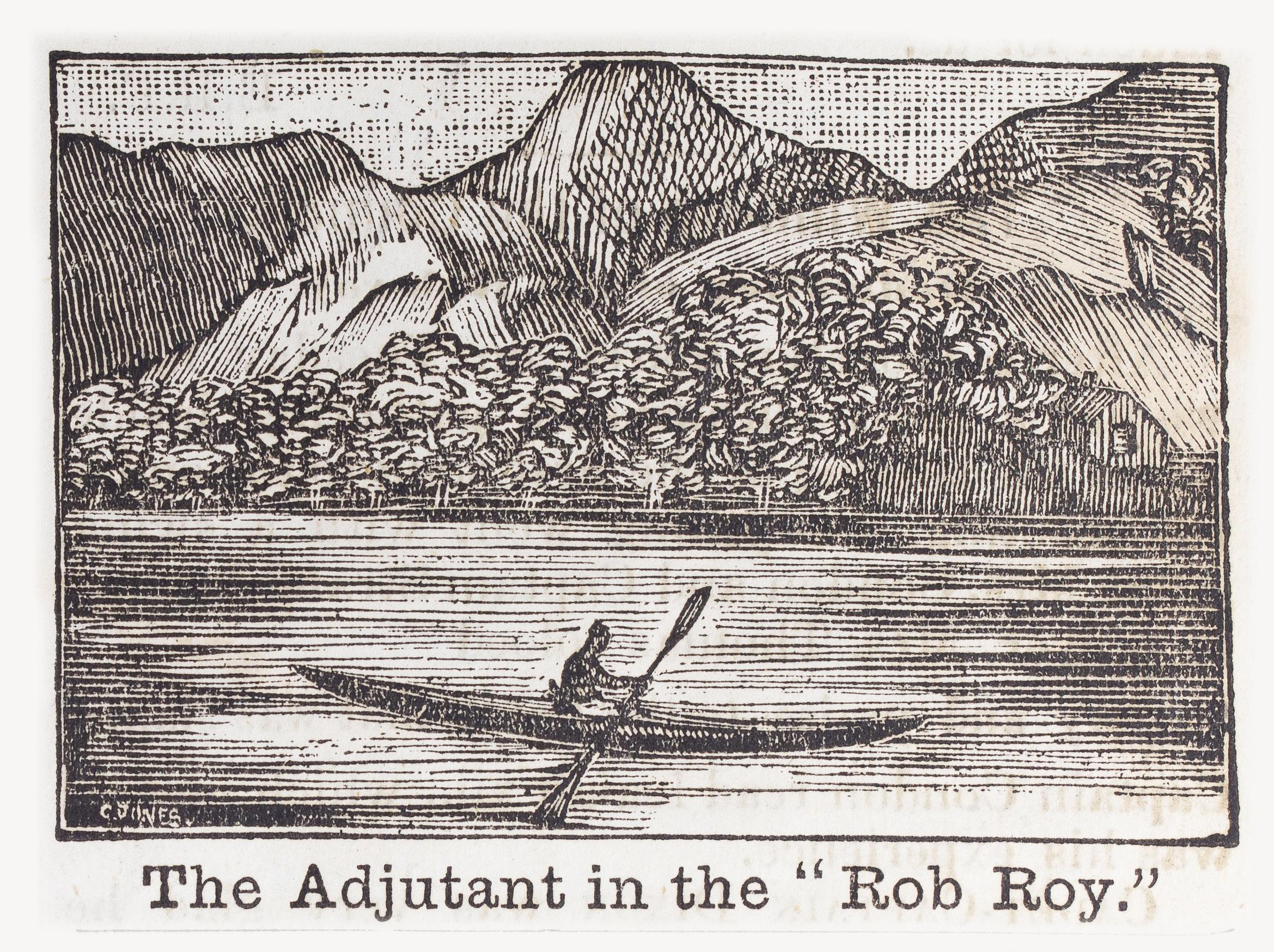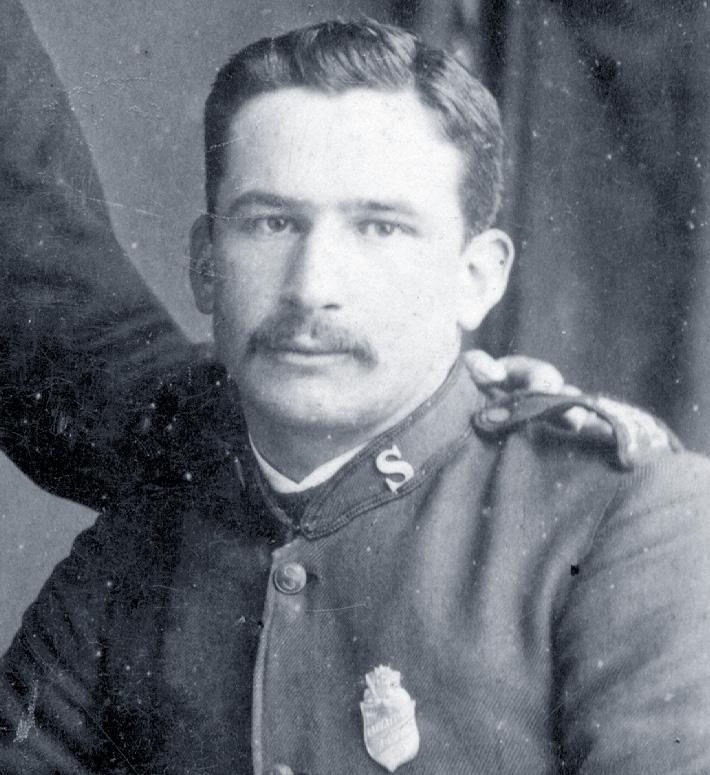
5 minute read
The Whanganui River | The Origins of Ministry
In January 1888 Captain Ernest Holdaway married Lieutenant Elizabeth (Lizzie) Edwards. As a young man, Lizzie had introduced him to The Salvation Army in Nelson. After their wedding they proceeded to Napier, as Captain Holdaway had been appointed to this corps, in November 1887 with Cadet De Blois. However in March 1888 De Bois had a change of appointment to Whanganui and it would not be long before Captain Ernest and Lizzie Holdaway would find themselves in the same region. A new ministry awaited them there - one that would capture their hearts.
In 1888, it was five years since The Salvation Army held its inaugural service in New Zealand and several days of celebrations began on 19 May, in Christchurch. There it was announced that the newly married Holdaways would begin a new ministry among the Māori population along the Whanganui River.
On 10 June 1888, in The Salvation Army hall, Taranaki Street, Wellington, known as "The Salvation Factory", two thousand people witnessed the handing of the flag by Mrs Colonel Taylor to Captain and Mrs Holdaway. Instead of the words, 'Blood and Fire' the flag carried the translation, 'He Toto He Ahi'. "Three Maori converts, wearing handsome flax mats, stood with the Holdaways on the platform - Eruera Rangiuia [mis-spelt Ranginia in The War Cry], Mrs Hearn and
Maraea Morris."
Lieutenant De Blois, believed to be of Māori heritage, was now in Whanganui and would join the Holdaways in this innovative venture.
DAY ONE | Off to Jerusalem | The Beauty of the River and the Delights of Salvation
This first article utilised the full front page of The War Cry and is titled "Off to Jerusalem. BY THE COLONEL" (Colonel Josiah Taylor). At this time The War Cry was a large format paper and measured 280mm x 425mm, the article was therefore designed for maximum impact.
The Colony Commander stimulated reader interest with the by line, "The start from Wanganui - River Scenery - The Dangerous Rapids - Piripe and the Brandy Bottle - Potatoes and Whitebait - All about the Rob Roy - Parakino at Last."
He opened with an account of the Whanganui War Council meetings, held for local and visiting Salvationists over several days, which preceded the river journey. Major Rolfe, Lieutenant Annette Paul (who later was instrumental in establishing The Salvation Army's social services for women and children), Mrs Cumberland and her daughter and Colonel Taylor were to accompany Holdaway and a contingent of local Salvationists to make, "a combined attack upon Jerusalem".
With an 8:30 am start and after a series of fond farewells, first on land and then from the water, the waka party left Whanganui, "the volley firing, shouting, and waving of handkerchiefs both from those who were left behind (but whom we could not help thinking would jump at the chance to come) and from our party in the canoes, were immense."
The noise from Salvationists along the river bank, Taylor believed, would have let all Whanganui know that the waka had departed. He described the dimensions of the waka with care, they were 60 feet long and narrow, made from the hollowed out centre of tree trunks. "Maoris know very well how to manage them, as well as being thoroughly acquainted with the dangers and difficulties of the river." He also made a further reassuring comment about the ability of the crew to swim.
Colonel Taylor described the green of the willows by the river and the layer of hills, covered with foliage that rose "up to heaven", behind the town of Whanganui to create an evocative atmosphere complemented by the sun that shone brightly on the waka party and those gathered on the banks.
His scenic descriptions continued and he noted how the faithful dogs following them along the banks had at times to jump in the river and swim because of the steepness of the river’s slopes.
"The journey was just magnificent...the hills which rise to great heights on both sides of the river, in some places are almost perpendicular...in these places when we shouted we could hear the echo of our voice among the mountains...the sweet singing of the birds, the rushing down of the waterfalls or the roar of many waters as they dash down the rapids... The vast number of lovely ferns spreading out their large branches to meet the warm rays of the sun, the willow...with the sight of a Maori Pah every now and again... In some parts the river with its numerous bends represented a large lake."
However the highlight, amongst all this beauty he pondered upon, was the salvation of those who lived in the river communities. The impact of The Salvation Army's presence by Holdaway and his contingent was evident by groups of people wearing, "Guernseys, S's , shields and tricolour ribbon...seen on every hand...children could often be noticed in little groups singing the Army songs."
The Colonel provided an account of the life and conversion of a local man, Piripe. "He was saved at the Maori Barracks in Wanganui before meetings were started up the river - was a drunkard too. He was with us throughout the trip and not only shouted and was happy in the meetings, but worked hard at the oar during the day and kept as he said 'proper saved' all the time".
Lunch at Matahiwi | Day One Ends at Parakino
When the waka arrived at Matahiwi, the first stop, three and a half hours from Whanganui, a lunch was kindly provided, a meal of potatoes and whitebait for all the travellers. At dusk the waka arrived at Parakino and they sighted the first Māori Barracks (hall) of their journey. Here 18 months ago Holdaway and Major Lovelock had held their first Salvation Army meeting and now the Colonel reported on there being 18 soldiers. The travellers squatted on the floor and ate "...a great spread of pork and eggs, etc., etc., laid on a white cloth on the floor."
It was shortly afterwards that the Adjutant Holdaway arrived in his one person waka, which had been dedicated "Nga Tuakana" (The Brothers) on the platform at one of the Whanganui War Council meetings held prior to this trip. It had been "supplied in a very generous way by our friends the Messrs. Baker Bros., of Wellington." This waka, referred to as the Rob Roy, featured in an illustration in this edition and it is noted that while Holdaway left three hours after the main party, he arrived one hour after them. Pleased with this time for its maiden voyage. Taylor reported that Holdaway was confident in making the full journey of 53 miles from Whanganui to Jerusalem in six hours.
Taylor noted that while on the river, the local population had no access to alcohol, compared to its ready availability when they visited Whanganui, however tobacco was very prevalent. "Nearly all the Maoris smoke, men, women and children alike; but it is a notable fact that nearly all our converts have got the victory over the pipe."
The meal was followed by a meeting, which Colonel Taylor would detail further in the following week's War Cry, of 9 November. Taylor describes how the travellers settled down in the wharepuni, which slept 40 -50, "...a large room with no furniture except a number of flax mats laid on the floor. An aisle runs up the centre in which there are two or three pits for fires to be built in...there are no ventilators...except two tiny windows and a door at one end...if visitors come they take their abode here at once and food is brought to them by the people of the pah." Wrapped in blankets they prepared for sleep that first night, listening as was the custom to men speaking and discussing various topics until 3 am. The women travellers were located in different sleeping locations.
The breakfast cooked early in the morning was welcomed, "The kumaras were a rare treat , we enjoyed them much. After rations had been served out we had knee-drill, bade them good-bye, and started on the second day."












